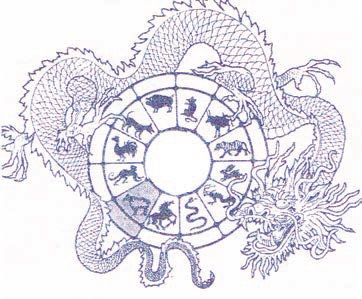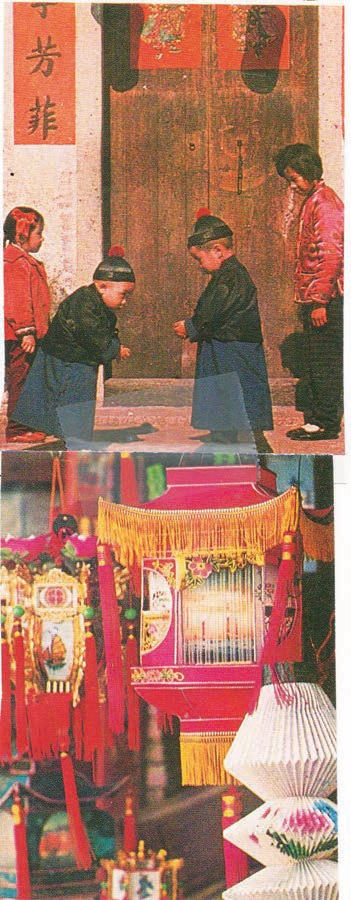
| What is Flavor and Fortune? |
| How do I subscribe? |
| How do I get past issues? |
| How do I advertise? |
| How do I contact the editor? |
Read 12970696 times
Connect me to:
| Home |
| Articles |
| Book reviews |
| Letters to the Editor |
| Newmans News and Notes |
| Recipes |
| Restaurant reviews |
| Article Index (all years, slow) |
| List of Article Years |
| Article Index (2025) |
| Article Index (last 2 years) |
| Things others say |
| Related Links |
| Log In... |
| Authors |
| Categories & Topics |
Chinese Holdays: After the New Year
| by Jacqueline M. Newman |
Holidays and Celebrations
Summer Volume: 2018 Issue: 25(2) pages: 8 to 10
Chinese New Year and Lantern Festival were discussed in Volume 25-1, there are many other holidays in the Chinese year. The next is Ching Ming, then Tin Hau’s birthday, Cheung Chau, Buddha’s birthday, the Dragon Boat Festival and so on. This article, looks at many others that follow in order of China’s Lunar Calendar, now more commonly called the Lunisolar calendar. They are discussed below and in calendar order.
Ching Ming is a family holiday that is also known as the Clear and Bright Festival or the Pure Brightness Festival. It is in early Spring. On this day, families visit the graves of their ancestors, and once there, they clean around them, kow-tow three times to each of them, often leave flowers and favorite foods for their spirits there, may leave wine or another alcoholic beverage, even pour some on the ground near their ancestors’ graves. Some burn notes printed from the ‘Bank of Hell’ to provide any needs they may have in their afterlife. Others may bring tea, chopsticks, joss paper, incense, clothes, or other gifts for them. These traditional gifts are popular, particularly among the elderly visitors.

Some carry or wear willow branches, others do bring them and leave them there. Still others may place them on their gates to ward off wandering evil spirits. Some families bring a whole or part of a roast pig, fish, or a cooked chicken or two, head, feet, and every part attached. These foods are for sharing with their ancestors, picnic-style. Some prefer sharing them at home near ancestral tablets.
Tin Hau's Birthday, also known as Festival of the Heavenly Queen, the Goddess of Fishermen. Folks come and decorate or see the fishing vessels already decorated and they worship her there. Some join festivities touring from Joss House Bay, Yuen Long, or another port. They celebrate bringing foods of the sea to share with her spirit. Fishermen and those who care about them and their catch do celebrate on this day. Not a holiday off from work, many go after the middle of the day to a fisherman temple to pray and gather with families and friends and enjoy some of their catch.
| Moon Cakes |
|---|
3 Tablespoons peanut oil
1. Mix peanut oil and gold syrup with the cake flour and
let rest two hours.
|
Cheung Chau is China’s bun holiday’ in late Spring on the Chinese Lunar calendar. Once a multiple-day religious holiday, this day is a popular holiday for many to celebrate at lunch or after work, and join processions to and from temples, or go to enjoy Chinese opera. Some bring effigies of one or more Gods to a temple and put buns on them. Others parade in the streets carrying bun-laden statues. This holiday is popular in Taiwan more so than in other places; and lots of families make or purchase buns to pin on one or more Gods they appreciate for good luck. Some walk on stilts on this festive day, others dress in historic costumes before or when doing so; and many sell buns and donate the monies they collect to give it to a charity that helps the less fortunate.
Buddha's Birthday is near the end of May and is celebrated on the solar or the lunar calendar honoring this famous Chinese sage and teacher. Popular in all Buddhist Temples and places where statues of this venerated one is, are also enjoyed on or before this day when statues of Buddha are bathed once more. Whenever they clean or dress his statue, worshipers hold ceremonies to venerate him. We did attend one at the Po Lin Monastery on Lantau Island many years ago. It was loud and lovely with many there to honor him.
Dragon Boat Festival, also known as the Tuen Ng holiday, which some call the Double Fifth Festival. It is on the fifth day of the fifth Chinese lunar month; and should it fall on a week-end, there are many revelers watching and cheering the big dragon boats, the huge drums in them keeping time. Those who watch and cheer, smile, wave, and cheer them on. Many know about Qu Yuan, the poet (340 to 278 BCE) who did drown himself in the Milo River holding a stone to keep him under water. He did so as he was upset with his new king and the corruption in this government. He was banished to a remote part of the country even though a minister to the Zhou Emperor. He did try to reduce rampant corruption he saw, but was unsuccessful so doing. He was held hostage in the State of Chin where he later died; and his son refused to avenge him, repent, or tend to business. All he wanted was to enjoy the fruits of ancestral efforts.
On the anniversary of this event, ordinary people organize flotillas worried that water creatures might devour this minister. They wrap food in bamboo or lotus leaves and throw these packets into the river for him as they remember the anniversary of his jumping into the river and recall the things he did for his country. They still hope to find him, but never have. Read more about him and this day in Volume 8(3) where M. Leong did write about him and this festival. Seek it out at www.flavorandfortune.com and check the recipe index to make zong zi used to remember and honor him.

Hungry Ghost Festival, also known as Yue Lan in Chinese, is celebrated in the seventh lunar month, some celebrating it for the entire lunar month, others selecting one or more days that month to do so. They believe the gates of hell open and release all lost souls to wander about during these days or this entire month. It is near the end of August, and many make or purchase paper money and/or cut-outs to burn as offerings to placate these wandering ghosts. Some do so only on one or two days during the month to appease these wandering souls. Some places load long tables with foods available for all or foods to be donated to or by local businesses to those in need.
On the evening of a designated day, any foods not consumed or those specifically set aside as donations for them are given to the homeless or to local charities. Many people go to open-air classical opera performances about this holiday or to pop concerts or other forms of entertainment. Many proceeds from these events are given to those in need.
Mid-Autumn Festival, also a lunar holiday, is celebrated on the fifteenth day of the eighth lunar month. Widely celebrated, it is called by some the ‘Family Reunion Festival.’ Many gaze at the moon in the evening. Years ago, officials gave gifts of mirrors so people could flirt with the moon. Also called Chung Cho Jie or the Moon Cake Festival., many make or purchase moon cakes in remembrance of an uprising in the 14th century against the Mongols. It was a revolt to recall that was to be held and kept secret as people wrote the date on slips of paper that were stuffed into moon-shaped cakes smuggled to compatriots organizing this uprising. Led by Liu Bao-wen, they hoped to over-throw the Yuan Dynasty when worshiping the Moon God wishing for continued protection, good fortune, and thanks for the many blessings they had. One moon cake is usually shared by an entire family. Many are filled with sweetmeats such as bean paste, lotus seed paste, mashed melon seeds, nuts, whole egg yolks resembling the moon, and/or other popular foods symbolic of completeness and family unity.
The origin of this holiday is debated. One notion is derived from the honey cakes of the 3rd century BCE called chu-ju that are mentioned in Summon the Soul, a literary piece cited in an agricultural encyclopedia circa the 6th century CE. On this day, many observe a ceremony called ‘capturing the moon,’ and they do so at midnight. They like to look at the moon peering into a basin of water. Though few do so today, many speak about it as if they did. The moon cakes they make or buy are preferred stuffed with Chinese ham, roast pork, sausage, chopped walnuts or other nuts, other sweet or savory items, and other loved foods.
Confucius' Birthday is celebrated in the fall. It is on the lunar calendar, and in 2016, will be September 28th. This editor knows it well as her great-grand- daughter was born on this birthday. She celebrates this birthday joining many Chinese in many countries; who go to temples that honor this master. Many in her family tell her she is honored as thanks for her love of and touting of Chinese food.
Cheung Yeung is a day recalling what happened during the Han Dynasty. Then a soothsayer said this 9th day of the 9th lunar month was when a family was told to go to a high place and avoid disaster.
They did follow these instructions, and are glad they did because when they returned home they did discover that all living things had perished. To remember this horrific event, on this day they visit family graves and feel safe doing so visiting those buried in high places bringing food and things they might like, they burn them there in celebration.
Birthdays, the Chinese celebrate when a child is one year old, many believing they are two at that time. They celebrate this important event as in days gone by when many did not live that long. Parents and grandparents prepare red turtle-shaped glutinous rice cakes and they help the baby place his feet on them. If he or she does, he will live a long life, as turtles do. Popcorn is rubbed on the baby’s mouth and buttocks to wish that the tyke will grow strong and healthy.
At age sixty, family and friends mark the beginning of their long life. To survive this long, they worship the longevity god, share peaches and other fresh fruit, and red turtle-shaped rice cakes believing this is their most auspicious birthday.
Overall, peaches to the Chinese, are the symbol of longevity. Many know the God of Longevity holds one in his hand, a staff in the other hand.. Turtle-shaped rice cakes wish many more celebrations and brings thoughts of prosperity, completeness, good fortune, and longevity. This celebration with or without private rituals or public banquets make them have hing bao as they enjoy family and friends together. This most important birthday to them is five cycles of twelve, and it never goes uncelebrated.
| Moon Cakes |
|---|
3 Tablespoons peanut oil
1. Mix peanut oil and gold syrup with the cake flour and
let rest two hours.
|

Copyright © 1994-2025 by ISACC, all rights reserved
Address
3 Jefferson Ferry Drive
S. Setauket NY 11720